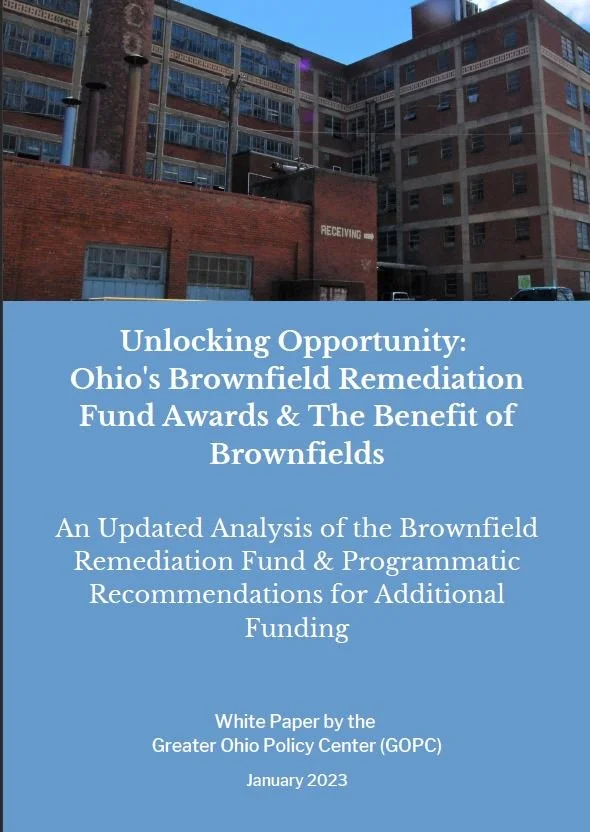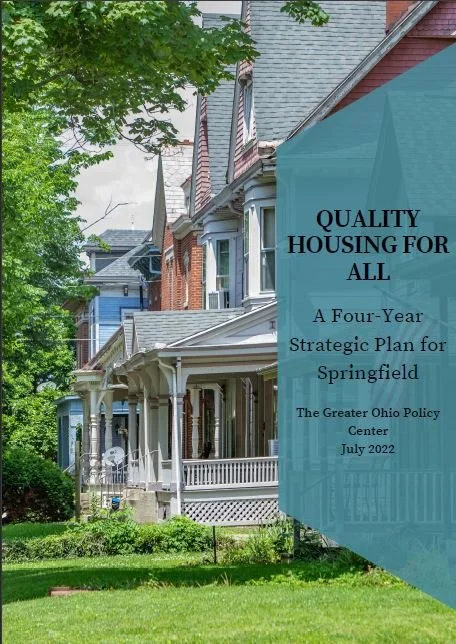The Greater Ohio Policy Center (GOPC) has released a white paper Unlocking Opportunity: Ohio’s Brownfield Remediation Fund Awards & The Benefit of Brownfields, which analyzes the full grant awards for the Brownfield Remediation Fund and makes the case for additional funding for environmental clean-up.
Quality Housing For All: A Four-Year Strategic Plan for Springfield
The Greater Ohio Policy Center (GOPC) has released a multi-year strategic housing plan for Springfield. Quality Housing for All: A Four-Year Strategic Plan for Springfield provides community leaders with a roadmap to address current and future housing needs in Springfield. Community leaders have elevated housing as a communitywide priority.
Revitalizing America’s Smaller Legacy Cities: Strategies for Postindustrial Success from Gary to Lowell
From Gary, Indiana to Lowell, Massachusetts, smaller post-industrial cities are taking strategic steps to regenerate – with the chance to follow their larger rebounding counterparts like Pittsburgh and Cleveland – by building on downtowns, capitalizing on a unique sense of place, and focusing on workforce development.
From Akron to Zanesville: How Are Ohio’s Small and Mid-Sized Legacy Cities Faring?
62.4 Report: Profile on Urban Health and Competitiveness in Akron, Ohio
Ohio’s Cities at a Turning Point: Finding the Way Forward
For over 100 years, the driving force of Ohio’s economy has been the state’s so-called Big Eight cities—Columbus, Cleveland, Cincinnati, Toledo, Akron, Dayton, Canton, and Youngstown. Today, though, the driving reality of these cities is sustained, long-term population loss. The central issue confronting these cities—and the state and surrounding metropolitan area—is not whether these cities will have different physical footprints and more green space than they do now, but how it will happen.
The state must adopt a different way of thinking and a different vision of its cities’ future—and so must the myriad local, civic, philanthropic, and business leaders who will also play a role in reshaping Ohio’s cities. The following seven basic premises should inform any vision for a smaller, stronger future and subsequent strategies for change in these places:
- These cities contain significant assets for future rebuilding
- These cities will not regain their peak population
- These cities have a surplus of housing
- These cities have far more vacant land than can be absorbed by redevelopment
- Impoverishment threatens the viability of these cities more than population loss as such
- Local resources are severely limited
- The fate of cities and their metropolitan areas are inextricably inter-connected
These premises have significant implications for the strategies that state and local governments should pursue to address the issues of shrinking cities.






